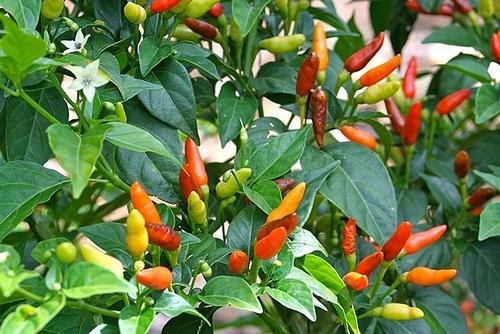A new study published in January 2016 in the prestigious international journal Spine reports that Capsicum frutescens (cayenne) reduces pain more than placebo. Although Harpagophytum procumbens (devil’s claw), Salix alba (white willow bark), Symphytum officinale L. (comfrey), Solidago chilensis (Brazilian arnica), and lavender essential oil were all effective in reducing non-specific lower back better than placebo, it was cayenne applied topically that was the most active.
This is an especially interesting report as it comes from the Cochrane Collaboration who review many studies, assess them for robustness of methodology and compile the results. This tends to rule out bias and ‘outlier’ results and usually indicates a pretty solid finding.
The researchers do, however, comment on the disappointing lack of well-designed and strongly conducted studies and they suggest more research is warranted.
Spine (Phila Pa 1976). 2016 Jan;41(2):116-33.
Herbal Medicine for Low Back Pain: A Cochrane Review.
Gagnier JJ, Oltean H, van Tulder MW, Berman BM, Bombardier C, Robbins CB.
STUDY DESIGN:
Systematic review of randomized controlled trials (RCTs).
OBJECTIVES:
To determine the effectiveness of herbal medicine for nonspecific low back pain (LBP).
SUMMARY OF BACKGROUND DATA:
Many people with chronic LBP use complementary and alternative medicine (CAM), visit CAM practitioners, or both. Several herbal medicines have been purported for use in treating people with LBP. This is an update of a Cochrane Review first published in 2006.
METHODS:
We searched numerous electronic databases up to September 2014; checked reference lists in review articles, guidelines and retrieved trials; and personally contacted individuals with expertise in this area. We included RCTs examining adults (over 18 years of age) suffering from acute, sub-acute, or chronic nonspecific LBP. The interventions were herbal medicines that we defined as plants used for medicinal purposes in any form. Primary outcome measures were pain and function. Two review authors assessed risk of bias, GRADE criteria (GRADE 2004), and CONSORT compliance and a random subset were compared with assessments by a third individual. Two review authors assessed clinical relevance and resolved any disagreements by consensus.
RESULTS:
Fourteen RCTs (2050 participants) were included. Capsicum frutescens (cayenne) reduces pain more than placebo. Although Harpagophytum procumbens (devil’s claw), Salix alba (white willow bark), Symphytum officinale L. (comfrey), Solidago chilensis (Brazilian arnica), and lavender essential oil also seem to reduce pain more than placebo, evidence for these substances was of moderate quality at best. No significant adverse events were noted within the included trials.
CONCLUSIONS:
Additional well-designed large trials are needed to test these herbal medicines against standard treatments. In general, the completeness of reporting in these trials was poor. Trialists should refer to the CONSORT statement extension for reporting trials of herbal medicine interventions.
